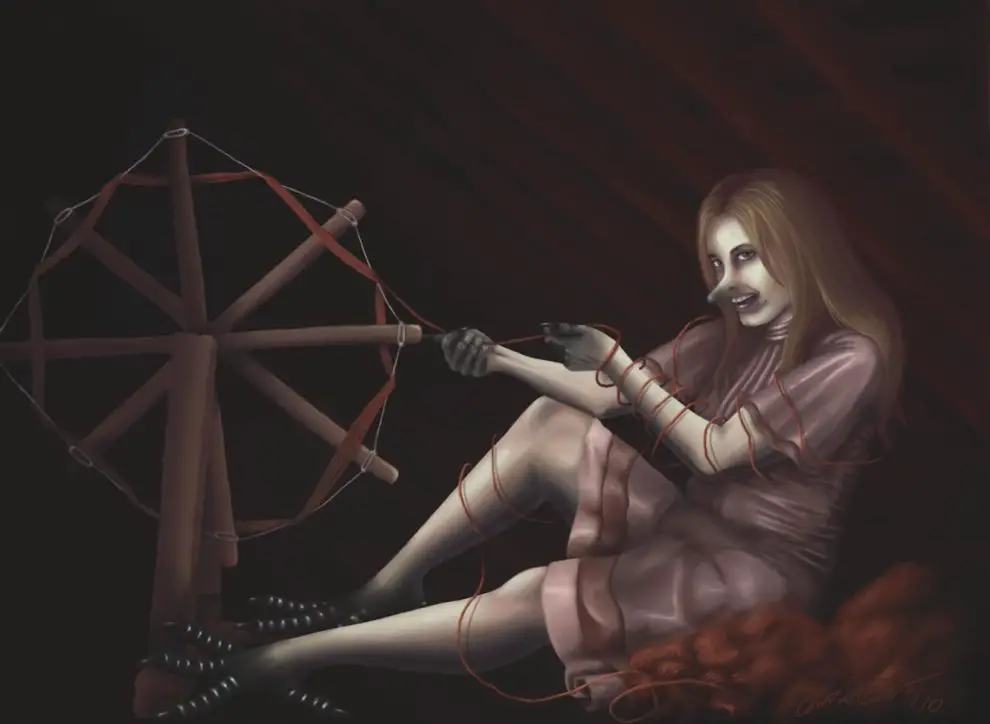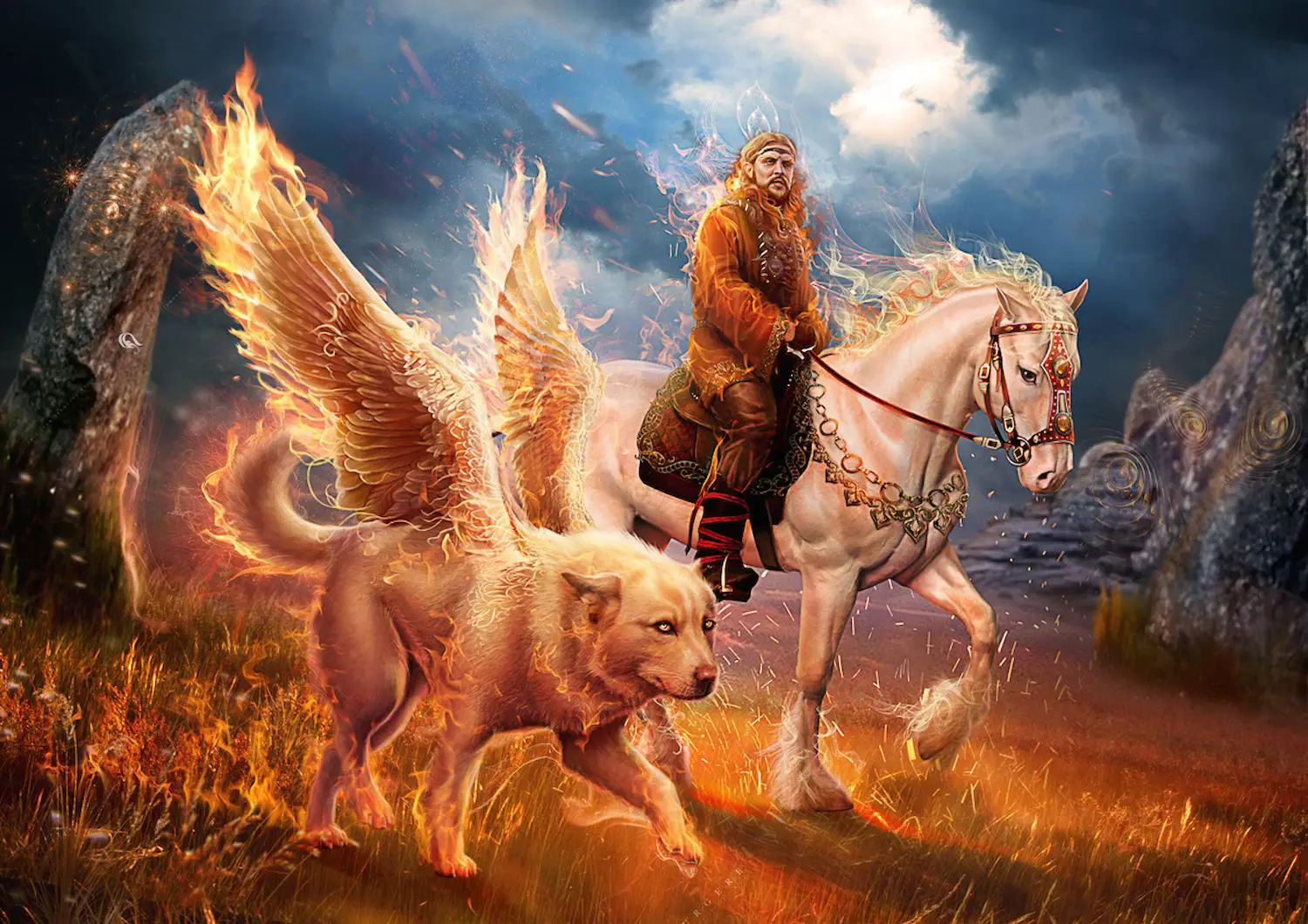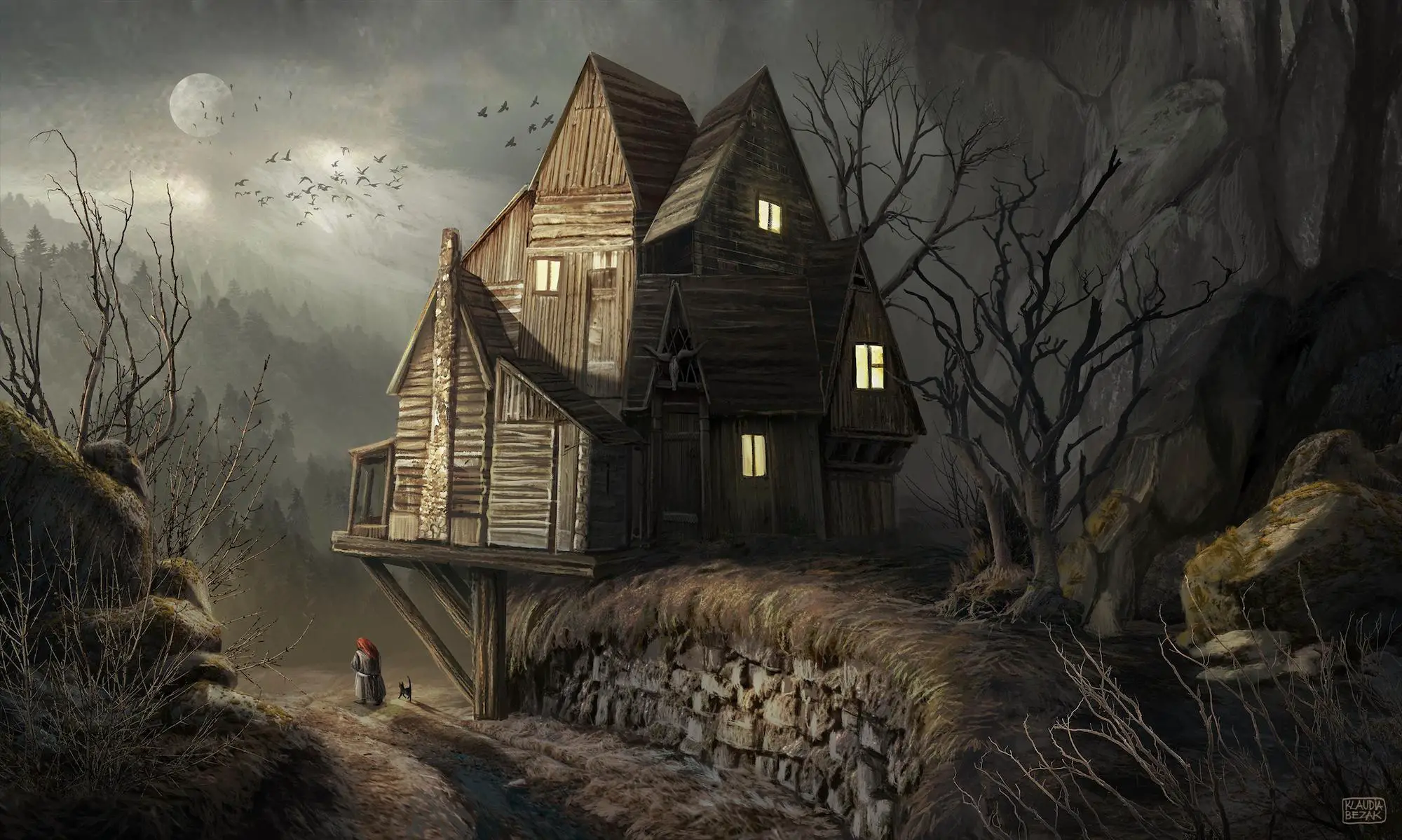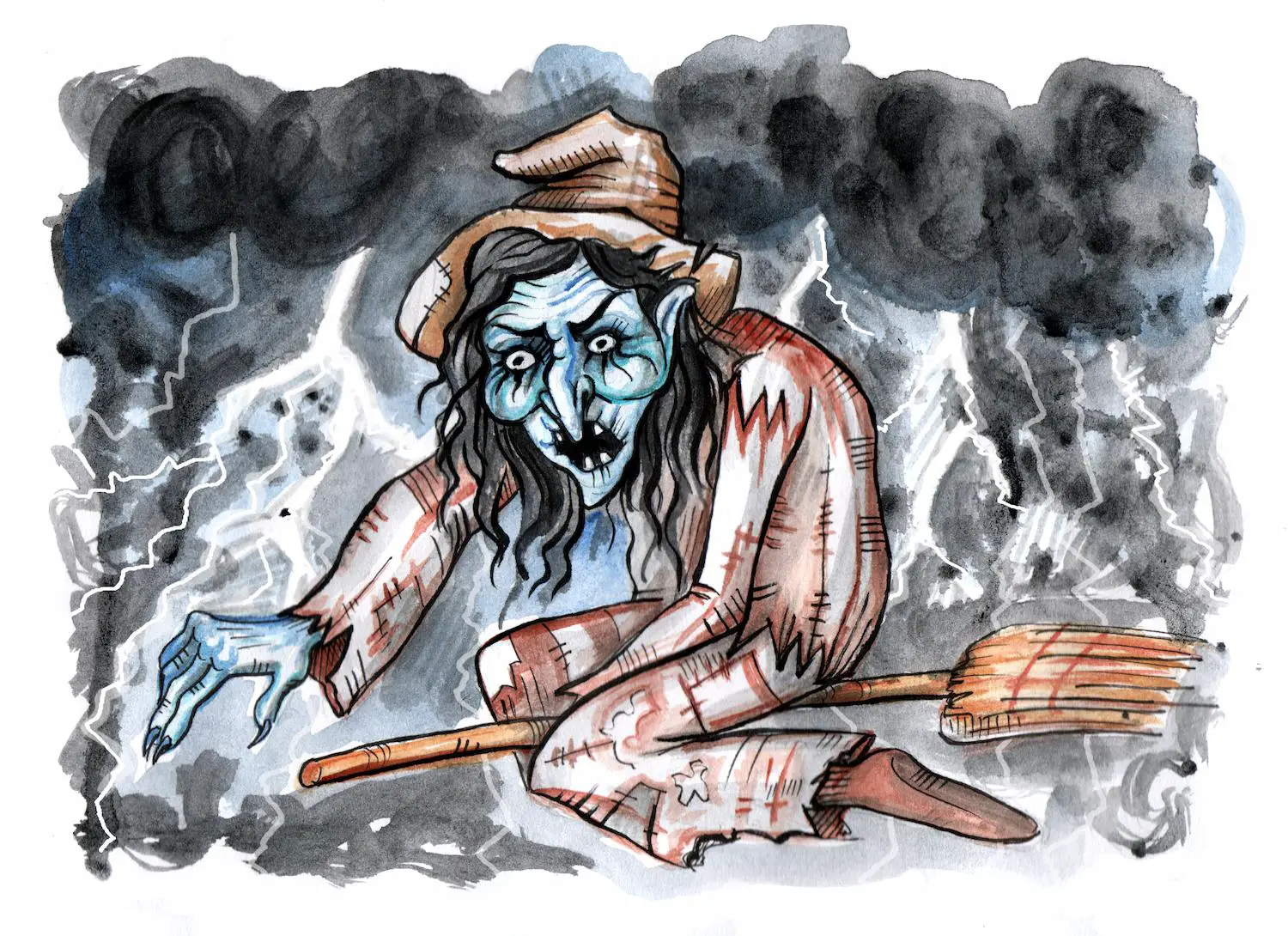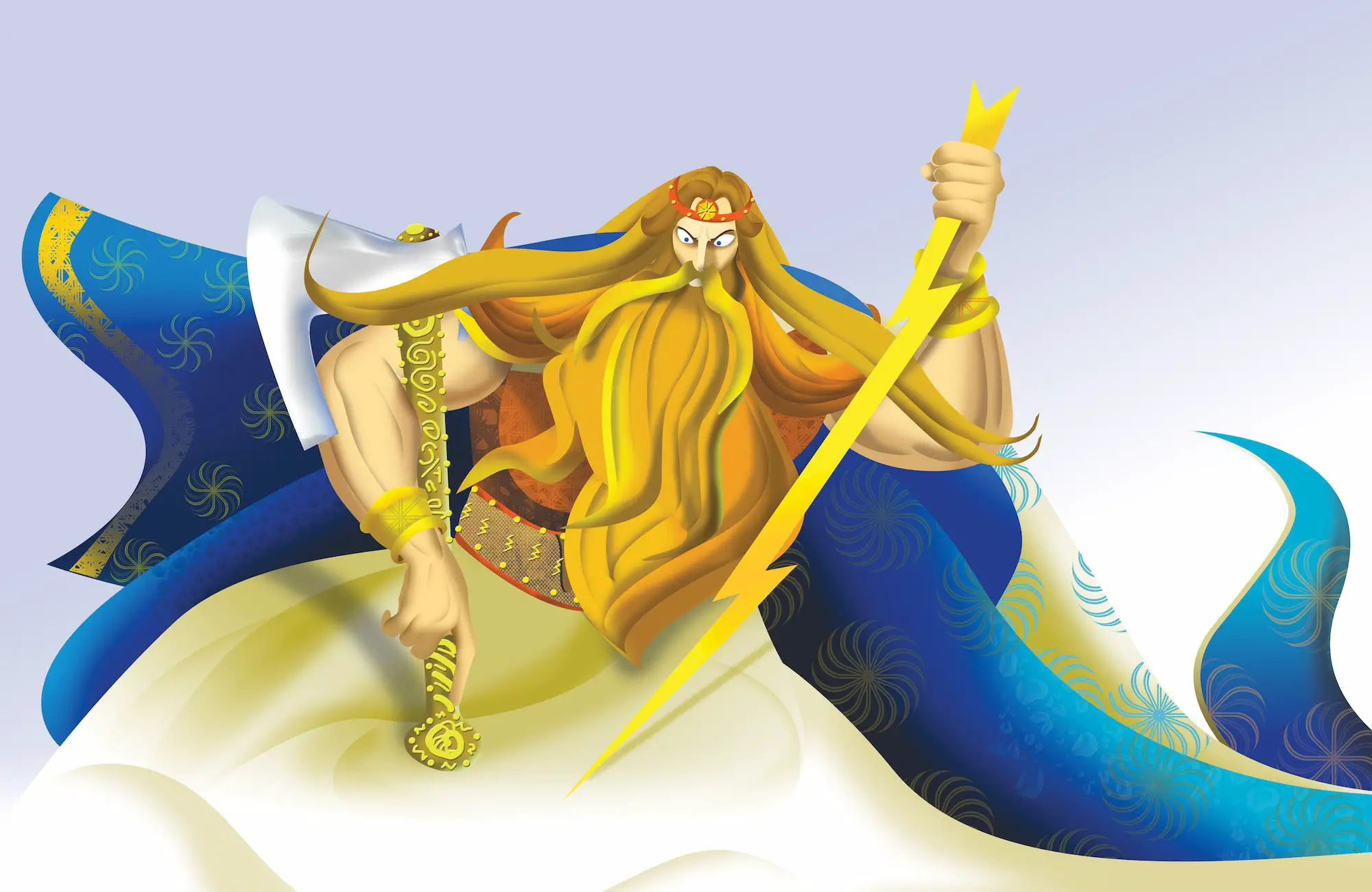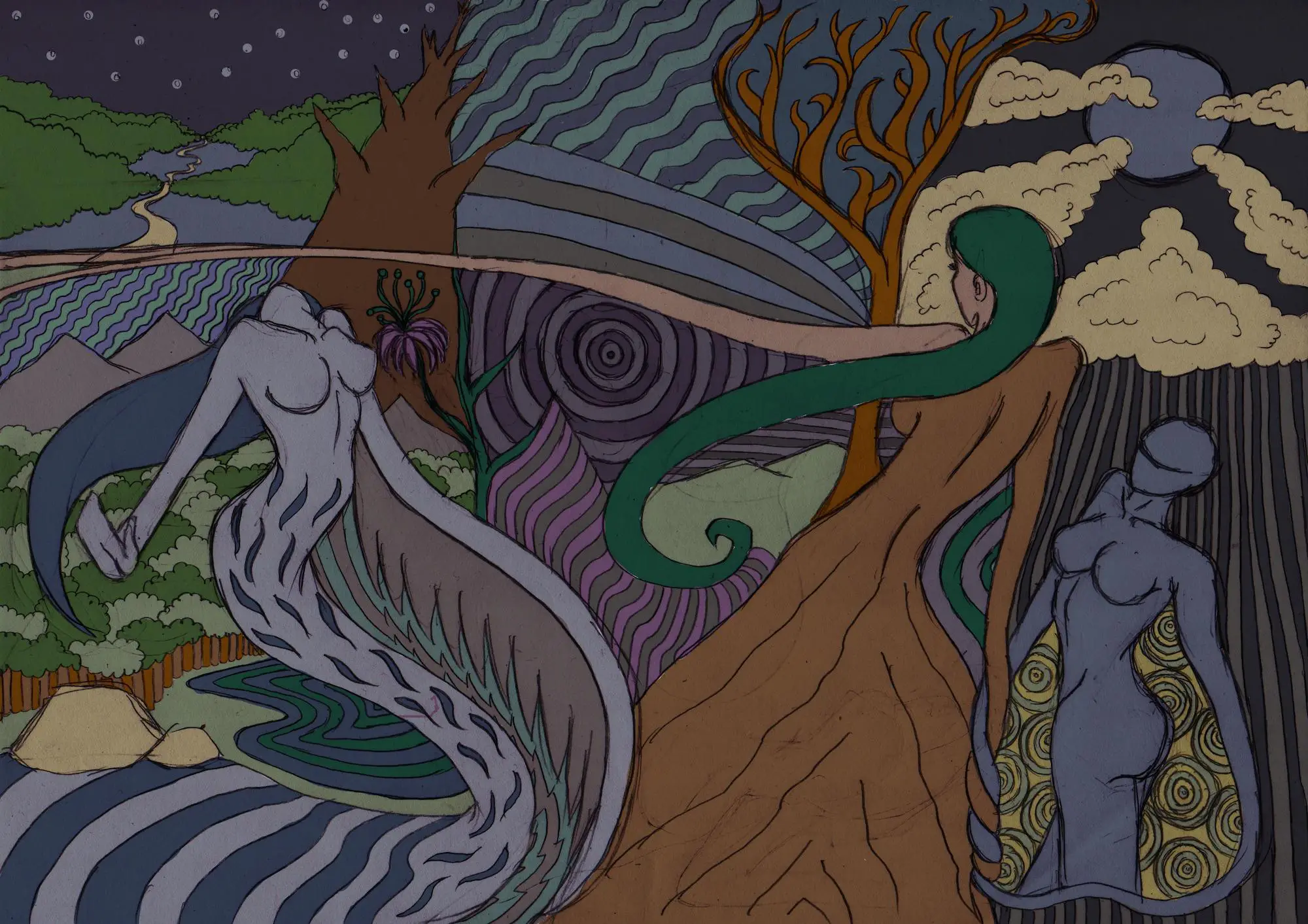In the past, many spooky, beautiful, or funny creatures appeared in tales Slavic people used to tell to children before bed. Thanks to the development of modern technology, we can see many of these creatures on the screen, in movies, and in PC games.
The Slavic folklore has been inspiring filmmakers for decades. But it has never attracted so much attention as it did with the fantasy world of the Netflix TV series The Witcher.
One of the creatures featured in this series is Kikimora. This scary spider-like creature appears in the first, opening scene. It fiercely attacks the main character in a gloomy swamp site [1].
But how close is this portrayal to the original Kikimora mythology from Slavic tales? Let’s compare them and see.
Table of Contents
Kikimora From Slavic Mythology: A Nasty Female House Spirit
Many ancient Slavic tales keep memories of Kikimora – a mischievous female house spirit. Yet, we can find the most detailed story about her in Russia.
She appears as an ugly woman-like creature. Deformed or with animal extremities (usually from a chicken, but also from a rabbit or a dog), she wears a kerchief around her head.
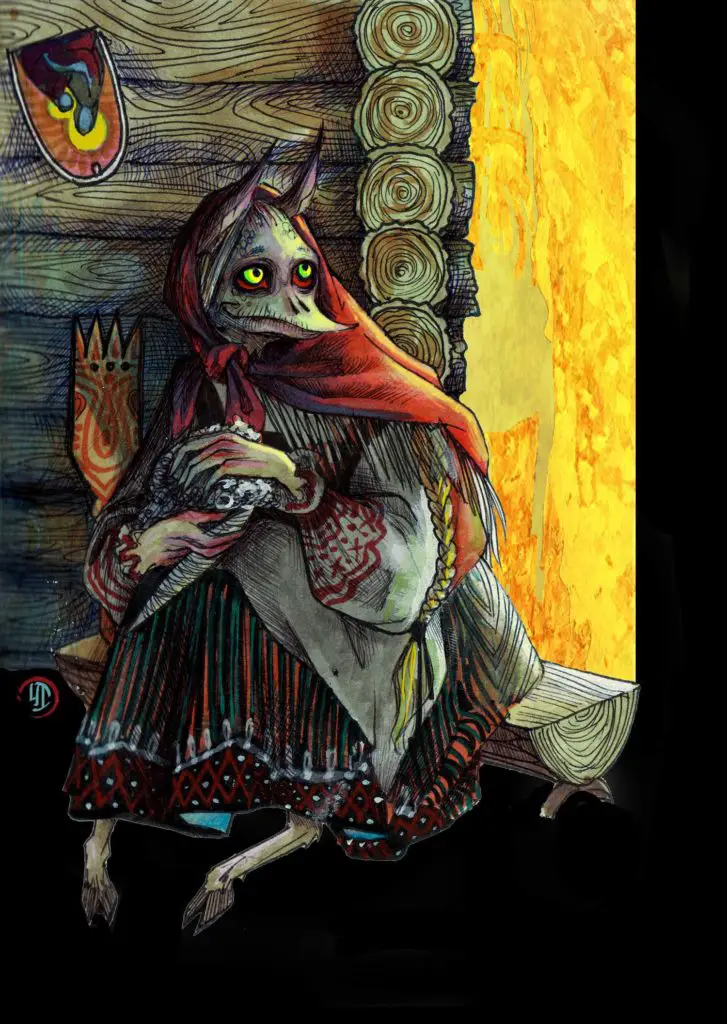
Kikimora could also change her looks, and appear in the body of a beautiful woman. She inhabits dark places of human houses and lives in the attic, or behind fireplaces and stoves.
The dwellers of the house know she is or was in the house because of the wet footprints she leaves behind. She also causes food to spoil, doors to slowly open, and can make the lives of people a nightmare (literally).
People believed that the worst nightmares came from Kikimoras, known as spirits of the night. She could either torture people in their dreams or get people to doubt their spouses.
In the search of an explanation for the intense experience of sleep paralysis, people used to say that Kikimora was sitting on their chest during sleep.
By doing that, she would prevent them from breathing and provoke the terrifying feeling of drowning that often happens in sleep paralysis. The legend interpreted the scary visions of dark ghosts and shadows related to this state as the presence of Kikimora.
They are fond of any type of needle-work. Sometimes, they can hide in the night and spin the distaff without any obvious result. It’s a very bad omen for everyone in the house if someone perceives one or more of these things.
How Does Kikimora Come Into Being?
A new Kikimora comes to the world with every stillborn baby or a dead child.
Another way to create a new Kikimora is to irritate the people who build your new home. If in any way you insult them, they will invite this evil spirit to make sure you never sleep calmly during the night!
In a different and even more “scary” version of the story, Kikimoras come into being when parents curse their own children.
Is Kikimora Always Bad?
Kikimoras are believed to be bad spirits not only because they like to scare human children, but because they may cause children’s death or stillbirth. On top of that, Kikimora may even cause the death of the woman in labor.
Most often Kikimora is bad, but not always. According to the stories, what Kikimoras especially dislike is messiness and clumsiness. They enter such households through the keyhole, and once they inhabit a place, it’s very difficult to get them to leave.
If a house is clean and tidy, she could be good and quite helpful. In those cases, she will help by feeding the chicken and doing chores. If the housewife manages to keep the place tidy long enough, she could even drive Kikimora out for good.
Two types of Kikimora are known in the Russian version of the tale: a good one (living in the forest) and a bad one (living in a swamp) [2].
Is There Any Protection From Kikimora?
Kikimora is powerful and mean, but there are some ways, which are known to be an efficient defense against this grumpy spirit.
Of course, the most efficient way is to keep the place clean, hoping that she would leave and find someone else to bother.
However, frightened by bizarre noises, diseases, and nightmares, people were always in search of new methods against the calamities caused by her presence.
Since the tale says that she enters households through keyholes, the custom was to always keep the key inside or to put a piece of paper in the keyhole, to prevent her from entering.
In some Serbian villages, housewives used to keep broomsticks near the door, in the hope that this can protect their loved ones from Kikimora.
Kikimora was particularly interested in children, which is why mothers advised them to never look her in the eyes or be noisy during the night.
Whatever noises she makes in the room, the children were supposed to look through the window or stick their heads in the pillow to stay safe.
Etymology: What’s in the Name?
The contemporary word “Kikimora” came to the English language from Russian. It could be the case that the word originally stemmed from the ancient Finish.
Whatever the origin of the word, the story about the bad feminine spirit, that spoils food and gives hellish nightmares, is present in almost all Slavic languages. Many local variations share the common root “mora”.
The meaning of “mora” in Slavic languages implies burden, upsetting absence of content, anxiety, hopelessness, etc. In Serbian, the verb “moriti” means to kill or torture to death.
A dark name for an equally dark creature! The English term “nightmare” is inspired by this Slavic word as well.
Kikimora From the Witcher Series
Based on the fantasy novels of the same name written by Polish writer Andrzej Sapkowski, The Witcher brought ancient Slavic mythology to life.
Geralt of Rivia is the main character of this saga. He is a monster hunter known as witcher. He roams throughout the fantasy world, using his superpowers to destroy evil creatures and discover the secret of his destiny.
On his way, he will meet some Kikimores (an alternative spelling from the series) that he needs to kill.
Based on the content from this book and series, Kikimora doesn’t look much like the one from Slavic folklore (its body resembles a spider). Only the head has loose similarity with the human body.
Kikimora from The Witcher series is not a spirit willing to scare and kill children. It is a widely known animal-like demon, with a life organized in the large community dedicated to the Queen.
Not One but Three Types of Kikimora!
Not every Kikimora looks the same in the TV series. There are three sorts of Kikimoras: the workers, the warriors, and the Queen. The workers are smaller and look like spiders. On the other hand, warriors and the Queen resemble beetles.
Each of these three kinds plays a strict role in the Kikimora world hierarchy.
The workers are mostly filthy and extremely dedicated. These monsters are usually minding their own business, trying to be of use to their Queen.
However, when they feel threatened, they turn into dangerous venomous creatures ready to find and kill those who disturb their demonic life. Their job is to search for food in order to feed the Queen [3].
The only thing Kikimora warriors search for is some enemies to use their deadly tentacles on. The warriors are fierce enemies. They are massive creatures, with sharp barbs, teeth and extremities, loads of venom.
The Queen is so powerful and frightening, that even the mighty witcher Geralt never dared to stand up to her. Running away (fast) seems to be the only effective way to survive an encounter with her.
Her domicile is a dry and ugly desert covered in corpses of her enemies.
However, there are also some similar traits between The Witcher Kikimora and Kikimora from the fairy tales. Both Kikimoras live around boggy places, and they get out mostly during the night-time. Also, Queen Kikimora is another ferocious feminine being [4].
If you are brave enough, you can interact with a cinematic Kikimora, by playing The Witcher a PC game. This action role-play game from 2007 has several sequels, that are mostly based on Sapkowski’s short stories. It is among the best selling PC games of all time.
The Bottom Line
This article set on a search for the difference between the ancient tale about Kikimora and its counterpart from the contemporary books and TV series.
We saw that the author of The Witcher significantly changed Kikimora’s looks, virtually making it a new creature. The appearance might be new, however, the mean nature of her spirit stayed the same.
Today, we know that in time, stories naturally change (especially the ancient ones).
That is how Kikimora became a character of an epic fantasy novel, movie, and a PC game The Witcher.
There is, of course, a difference in how Kikimora is depicted here as well.
However, nothing is lost in this disparity. On the contrary – Kikimora was developed into other forms. It will be known to the children of the future, who will have some new horror stories to tell.
The original story about Kikimora comes from a time when there was no internet or modern medicine to explain all the nightmarish things that can happen to the human body. Kikimora was a way people made sense of the enigmatic and baffling events and experiences.
Anyhow, the story of Kikimora (the mean house spirit) stays one of the scariest bedtime stories ever told.
References
- https://time.com/5753369/the-witcher-history-folklore/
- https://hnentertainment.co/the-witchers-kikimore-explained-everything-you-need-to-know/
- https://witcher.fandom.com/wiki/Kikimore_worker
- https://witcher.fandom.com/wiki/Kikimore







